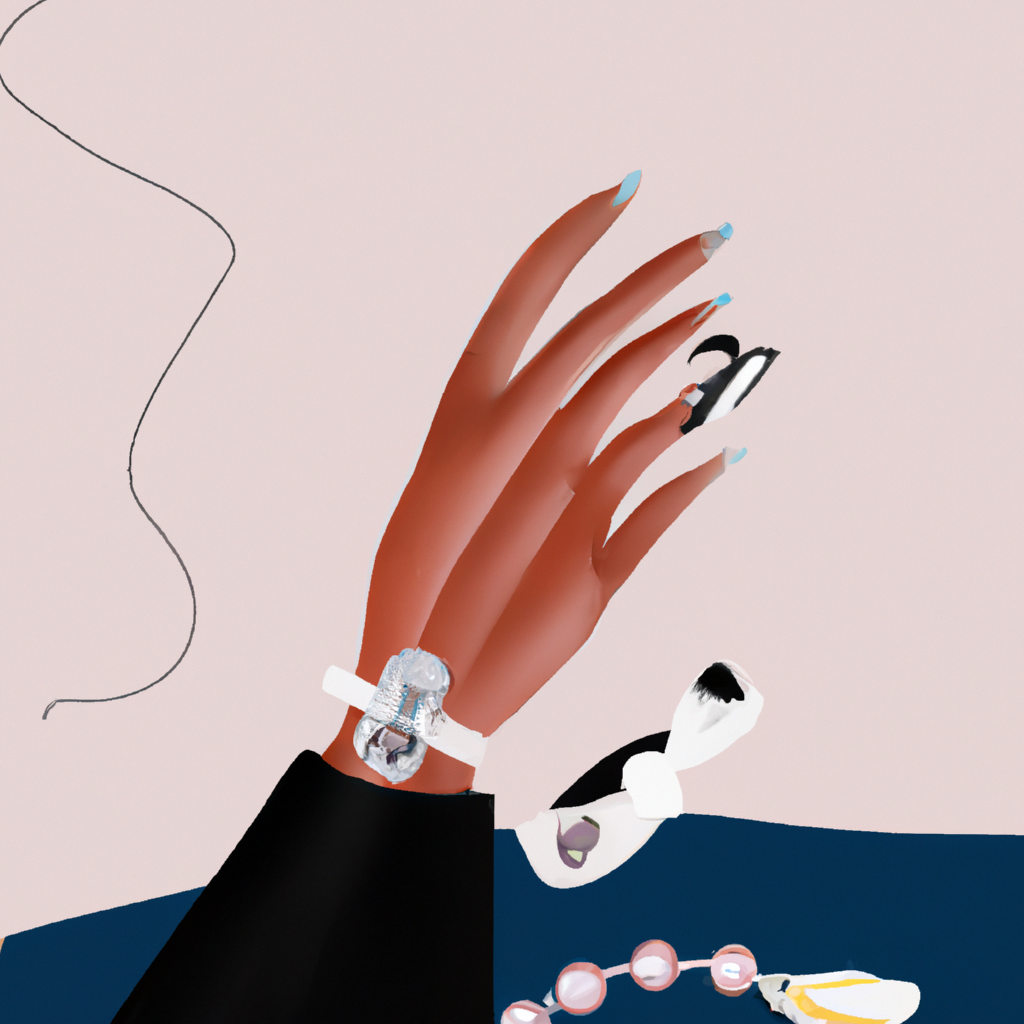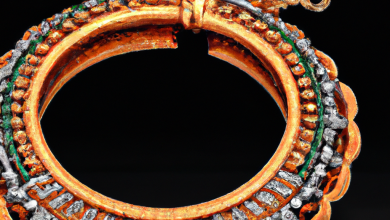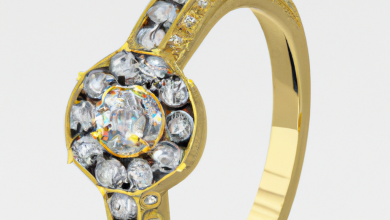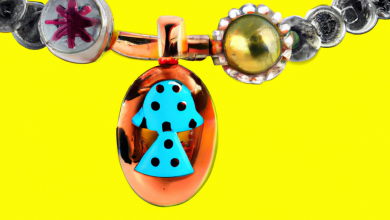
I. Introduction
Contemporary jewellery is an art form that combines creativity, innovation, and craftsmanship. It is a unique expression of personal style that allows the wearer to communicate their individuality and make a statement. While traditional jewellery designs have their own charm, contemporary jewellery brands have emerged that break away from the conventional rules of design and aim to create wearable art pieces that reflect the designer’s style, interpretation and vision.
Contemporary jewellery brands are characterised by their freeform designs that incorporate diverse materials such as precious gemstones, metals, wood, glass, ceramic, and even recycled materials. These brands stand out because of their unique, eclectic and unconventional designs. They are continuously pushing the boundaries of traditional jewellery design and blurring the line between art and fashion.
Understanding the stories and inspirations behind contemporary jewellery designs is crucial to appreciating the distinctiveness of each piece. Many contemporary jewellery brands are inspired by nature, culture, tradition, and personal experiences, allowing them to share their unique story through their art. Consequently, to fully appreciate contemporary jewellery, one must not only look at the beauty of the piece but also the thought and creativity that went into its conception.
In this article, we will delve into the world of contemporary jewellery brands in the West, looking at the inspirations and stories behind the designs they produce. We will examine their creative process, the role of sustainability in their designs, and the impact of technology and social media on the industry. Join us on this journey as we discover the stories and inspirations that bring these beautiful and unique pieces to life.

II. The Rise of Contemporary Jewellery Brands
Contemporary jewellery brands are a relatively new addition to the jewellery industry. Traditionally, jewellery was seen as an investment or a status symbol, and design elements were often based on specific cultural and historical references. However, with the advent of contemporary jewellery brands, there has been a shift in focus towards unique designs and self-expression, rather than just the value of the piece.
Contemporary jewellery brands first started to emerge in the 1960s and 70s, as a response to the strict and traditional conventions of fine jewellery. Artists began to experiment with materials like plastic, glass, and even found objects, creating wearable art that challenged traditional notions of jewellery.
Since then, the industry has continued to evolve. With the rise of technology and social media, contemporary jewellery brands have become more accessible to a wider audience. Now, designers can sell their work directly to consumers online, rather than having to rely on traditional retail channels.
Social media has also played a significant role in boosting the profile of contemporary jewellery brands. Instagram and Pinterest have become important platforms for designers to showcase their work and connect with potential customers. Many brands use these platforms to give followers a behind-the-scenes look at their design process and to tell their brand story.
In recent years, contemporary jewellery has become increasingly popular as people look for unique and individual pieces that reflect their personality and style. Consumers are drawn to the unique designs and materials used by these brands, and many appreciate the ethos of sustainability and ethical production that many contemporary jewellery brands espouse.
Overall, the rise of contemporary jewellery brands has brought a new level of creativity and self-expression to the industry. With a focus on unique designs and sustainability, these brands are pushing the boundaries of traditional jewellery and creating new opportunities for artists and consumers alike.
III. Telling Stories Through Jewellery
Storytelling has always been a part of the human experience, and contemporary jewellery brands have found a way to incorporate this into their designs. With every piece of jewellery, there is a story to be told, whether it is the inspiration behind the design or the story of the person wearing it.
Importance of storytelling in jewellery design
The ability of jewellery to tell a story is what sets it apart from other forms of wearable art. A piece of jewellery can hold a significant meaning and serve as a reminder of a special moment or person. It is the designer’s job to create a piece that conveys that message accurately.
Examples of contemporary jewellery brands that share their stories
One such brand is Alex Monroe, a British jewellery designer who takes inspiration from nature and the British countryside. His designs tell the story of his childhood spent exploring the wildflowers, and each piece is reminiscent of a particular plant or insect. The brand’s most popular item, the Bumblebee Necklace, tells the story of a bumblebee’s journey from flower to flower, collecting nectar along the way.
Another brand that shares its story through designs is Tatty Devine, a London-based jewellery company founded by designers Harriet Vine and Rosie Wolfenden. Their unique designs are playful, and each piece has a story behind it. One popular piece is the ‘Personalised Stargazer Necklace’, which celebrates the customer’s zodiac sign while incorporating the brand’s signature bold and colourful style.
In conclusion, contemporary jewellery brands have found a way to convey a message through their designs, and storytelling has become an essential element. The ability of jewellery to share a story makes it personal, and each piece unique to the wearer.
IV. Inspiration from Nature
Nature has always been a source of inspiration for artists, and contemporary jewellery designers are no exception. From the patterns and textures of rocks and minerals to the fluidity of water and the delicacy of petals, nature provides a rich and endless source of inspiration for contemporary jewellery designs.
One of the most significant ways that nature influences contemporary jewellery is through the use of natural materials. For instance, wood, seashells, stones, and metals are widely used in contemporary jewellery designs to create a connection between the wearer and the natural world. In many cases, the designers will choose to use raw materials in unpolished or untreated forms to emphasise the organic nature of the piece of jewellery.
Additionally, nature also inspires the shapes and patterns of contemporary jewellery pieces. It is not uncommon to see necklaces that mimic the pattern of tree branches or earrings that resemble the shape of leaves. This kind of jewellery reminds us of our connection to the natural world and can inspire us to become more mindful of our environment.
Apart from providing inspiration for design, nature also plays a significant role in the production and marketing of contemporary jewellery. Many brands have partnerships and collaborations with environmental organizations, where a portion of their profit goes towards conservation efforts. Other brands use recycled or reclaimed metals and stones in their designs to reduce their ecological footprint. The use of sustainable materials is also becoming more widespread in the industry not only to reduce the impact on the environment but also to create a connection between the jewellery and the wearer.
Some notable examples of brands using nature as an inspiration in their designs include Alex Monroe, whose jewellery pieces are inspired by the British countryside, and Fine Cell Work, whose designs are inspired by bugs and flowers.
In conclusion, nature plays a significant role in contemporary jewellery design. The use of natural materials, shapes, and patterns can create a sense of connection with the natural world, while the incorporation of sustainable materials can help to protect the environment.
V. Culture and Tradition as Design Inspiration
Culture and tradition have a significant influence on the world of contemporary jewellery designs. The inspiration for many designers often stems from the rich and diverse cultures of the world. Many contemporary jewellery brands take pride in incorporating traditional elements into their designs. By doing so, they aim to celebrate and preserve cultural heritage, while also offering unique and captivating designs to their customers.
One such example is the brand called Pippa Small. Pippa Small is a London-based contemporary jewellery brand. The brand is known for its unique, handcrafted jewellery that is inspired by the heritage and culture of the communities around the world. The designer, Pippa Small, works with artisans around the globe to create pieces that pay homage to cultural traditions. Her creations often incorporate gemstones from the local mines of Afghanistan and Pakistan. By using traditional designs and techniques, Pippa Small celebrates the uniqueness of each culture and brings it to a wider audience.
Another example of a brand that incorporates culture and tradition into its designs is Amrapali. Amrapali is an Indian jewellery brand that draws inspiration from ancient designs and crafts. The brand works with local artisans and craftsmen, and each piece is handcrafted to preserve the traditional techniques of jewellery making. The brand incorporates traditional motifs and elements into its designs, such as peacocks, lotus flowers, and paisleys, which are symbolic of Indian culture. By doing so, the brand has become synonymous with traditional Indian jewellery, and has a loyal customer base that appreciates the craftsmanship and cultural significance of their jewellery.
Incorporating traditional designs and techniques into contemporary jewellery is not just limited to brands based in Asia. Finnish brand Aarikka is another example of a brand that draws inspiration from cultural heritage. Aarikka was founded in the 1950s and is known for its sleek and minimalist designs. The brand draws inspiration from Nordic folklore and has a unique collection of jewellery that incorporates traditional Finnish symbols such as the tree of life and the bear.
In conclusion, culture and tradition fuel creativity in the world of contemporary jewellery designs. Brands that incorporate cultural heritage into their designs help to preserve and celebrate the rich diversity of cultures around the world. By doing so, they create unique and captivating designs that resonate with customers who appreciate the craftsmanship and cultural significance of jewellery.
VI. The Role of Sustainability in Contemporary Jewellery Design
Today’s consumers are increasingly conscious about the impact their purchasing decisions have on the environment. This growing awareness has pushed the fashion and jewellery industries to rethink their supply chains and prioritize sustainability. Contemporary jewellery brands have responded to this call to action by adopting eco-conscious practices into their business models. These brands incorporate sustainable materials, reduce waste, and employ ethical labour practices.
Sustainability is not just the right thing to do; it is also good for business. According to a report by Nielsen, 66% of consumers worldwide are willing to pay more for sustainable products. This trend is particularly relevant in the jewellery industry, where consumers are seeking out products that reflect their values and resonate with their personal stories. Buying a sustainable piece of jewellery is also an investment in the environment, and by extension, the future.
Many contemporary jewellery brands are leaning into the sustainability movement by prioritizing the use of recycled materials in their designs. Examples of recycled materials used in jewellery include conflict-free diamonds, upcycled gold and silver, and reclaimed wood. These materials are not only environmentally-friendly but also add unique character to the jewellery. Some innovative brands even incorporate industrial scrap metal and plastic waste to create one-of-a-kind pieces.
In addition to recycled materials, sustainable practices also involve reducing waste and promoting ethical labour practices. In the past, the jewellery industry was known for its wasteful use of precious metals and lack of accountability for workers’ conditions. However, contemporary jewellery brands have endeavoured to change this legacy by creating pieces that have a minimal environmental impact. For example, innovative design techniques such as 3D printing have enabled brands to produce jewellery with less material waste.
Finally, ethical labour practices are an essential pillar of sustainability in the jewellery industry. Fair labour practices are particularly important when it comes to sourcing raw materials, as many communities in developing countries are vulnerable to exploitation. Contemporary jewellery brands that prioritize ethical labour practices often build relationships with suppliers and manufacturers to ensure that every piece of jewellery is produced with integrity.
In conclusion, sustainability is becoming an increasingly important consideration in contemporary jewellery design. From using recycled materials and reducing waste to promoting ethical labour practices, jewellery brands have responded to consumers’ growing awareness of their environmental impact. These eco-conscious practices have not only made jewellery design more sustainable, but also reflect a changing industry that is more attuned to the values of consumers.
VII. Conclusion
Contemporary jewellery design is an exciting and rapidly evolving industry that has come a long way in the past few decades. Jewellery brands are now telling their stories and inspirations behind their collections, and as consumers, it’s important to listen to these stories. Behind every design, there is a meaning, a history, and a connection that can be better understood when we know the story behind it.
In conclusion, understanding the stories and inspirations behind contemporary jewellery designs is critical as it helps us relate to the pieces and learn more about the craftspeople and companies that create them. We can gain a deeper appreciation for the art and the time, effort, and thought that goes into every piece of jewellery. It is also an opportunity to connect with the cultural and environmental inspirations that influence designs.
As for the future of the industry, it’s clear that sustainability and ethical practices in jewellery design will continue to become more important to consumers. In response, we can expect to see more brands incorporating recycled materials, reducing waste, and producing designs that reflect more sustainable and eco-friendly processes. Social media will also play a bigger role as it will continue to connect designers and consumers worldwide. The rise of online marketplaces such as Etsy, Instagram and various online stores will make it easier for brands to reach customers and for customers to browse and buy unique pieces from designers across the globe.
In conclusion, this article has explored the importance of understanding the stories and inspirations behind contemporary jewellery designs. It has highlighted how the industry has evolved, the impact of technology and social media, and the various ways that designers draw inspiration from the world around them. As we embrace the future of the industry, we must remember the importance of understanding and cherishing the stories that make each piece of jewellery unique.



